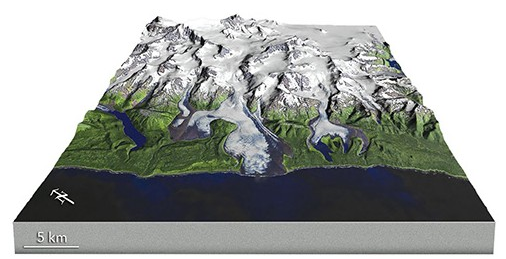Most of the world's aluminum comes from which of the following?
a. quartz
b. bauxite
c. hematite
d. plagioclase
e. basalt
B
You might also like to view...
Your friend says that the helium used to inflate balloons is a product of radioactive decay. Another friend says "no way." With whom do you agree?
A. Helium is an element of the periodic table, not some product of any reaction. Agree with the friend who says "no way." B. Your first friend is correct. Radioactive isotopes emit alpha particles which, in turn, capture electrons and become helium atoms. C. If helium were a product of radioactive decay, we would all be radioactive. Agree with the friend who says "no way." D. Radioactive decay produces alpha particles, not helium. Agree with the friend who says "no way."
What type of glacier is shown below on the gently sloping land near the coastline?

A) Tropical coast glacier
B) Shoreline glacier
C) Piedmont glacier
D) Continental ice sheet
Define a GIS.
What will be an ideal response?
About 20 percent of the energy passing from one trophic level to the next is lost.
Answer the following statement true (T) or false (F)